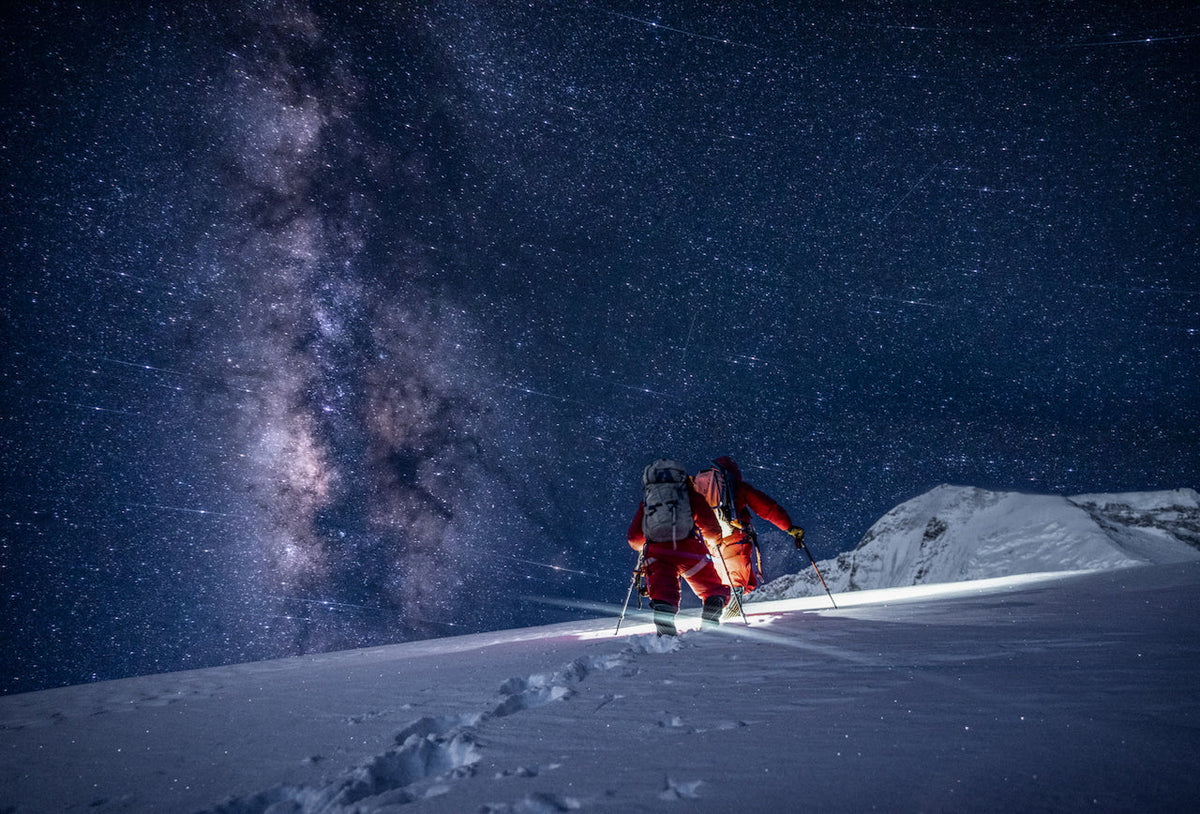

FOR IMMEDIATE RELEASE
Boulder, CO — Dhaulagiri, the award-winning Himalayan expedition film directed by Tommy Joyce and produced by Triage Creative in partnership with Eddie Bauer, has now reached a milestone that few adventure films achieve - 1.5 million views on Eddie Bauer’s official YouTube channel. The visually driven documentary, which follows an elite climbing team through one of the most formidable high-altitude ascents in recent history, has also earned 12 international film festival awards, cementing its place as one of the most celebrated modern climbing films.


The film’s mix of global scale and intimate human storytelling resonated deeply with audiences, evidenced not just in viewership, but in impassioned viewer reactions:
“The most impressive footage on a climbing expedition. Clearly a different approach and much more observant than trying to produce a certain content. Congratulations to all participants for the very mature decision making and preparedness.” — YouTube Viewer
“The quality of production is breathtaking and so is the content. I’m just in awe of mountaineers, endurance runners and athletes—these super humans train to constantly expand human limits and push right on the edge of being a pioneer or a death statistic. Salute.” — YouTube Viewer


An 18-Month Global Production
Principal photography for Dhaulagiri spanned three months on the slopes of Nepal’s 8,167-meter peak, the world’s seventh-highest mountain. But the production journey was far longer, an eighteen-month undertaking that brought Joyce and his crew to shooting locations in Nepal, Colorado, Ecuador and California.
The film making team battled shifting weather windows, logistical hurdles and the natural challenges of shooting at extreme altitude. In Joyce’s words from past interviews, “The camera is just as much a piece of expedition gear as the ice axe. It has to survive the mountain alongside you.”
That ethos shows in the film’s visual language, from sweeping drone shots capturing the stark immensity of Dhaulagiri’s ridges, to intimate vérité sequences inside wind-battered high camps, where climbers melt snow for water and steel themselves for the next push upward.


Storyline of Determination and Risk
The film centers on Ecuadorian mountain guide Topo Mena, a rising star in alpine climbing with a long-held dream of opening a first ascent route on Mount Everest. He teams up with Cory Richards, National Geographic photographer and the first American to climb an 8,000-meter peak in winter. Their initial Everest expedition is forced to retreat, but the partnership remains intact and their ambitions shift toward Dhaulagiri.
With Everest closed to them due to the global pandemic, Mena and Richards instead target a futuristic line on Dhaulagiri’s challenging south face.
Recognizing the extreme avalanche risk and technical complexity, they invite Carla Perez, another Ecuadorian mountaineer and one of the most accomplished women in high-altitude climbing history. Perez is the first woman to summit both Everest and K2 without supplemental oxygen in a single year.
The climb that follows pushes all three athletes to their limits. The film does not shy away from portraying the mortal danger involved — avalanches thunder in the distance, weather forecasts shift unpredictably, and the human toll of sustained altitude exposure becomes clear.

Critical and Audience Reception
Since its release, Dhaulagiri has been praised not just for its breathtaking visuals but for its unfiltered storytelling. Unlike traditional climbing documentaries that focus solely on summits, Dhaulagiri examines the motivations, doubts and moral calculus behind extreme risk.
Critics have noted that Joyce’s direction allows the audience to feel embedded with the climbers, not just as spectators but as participants in their uncertainty and resolve.
Festival Circuit Success
Over its opening year, Dhaulagiri was applauded during the international adventure and mountain film festival circuit, securing 12 awards including Best Cinematography, Best Director and Audience Choice. Screenings have taken place across North America, Europe and Asia, introducing the story to both hardcore climbers and general audiences.


Behind the Camera: Joyce’s Filmmaking Approach
As both director and cinematographer, Joyce balanced the creative demands of the project with the extreme realities of high-altitude production. Every battery, lens and drone had to be carried, protected from sub-zero temperatures and deployed quickly during narrow weather windows.
“I believe that expedition filmmaking should serve both the story and the mountain,” Joyce has said in past conversations. “You don’t compromise safety for a shot, but you also don’t let the story slip away because you weren’t ready to capture it.”
This philosophy has made Joyce a sought-after name in adventure filmmaking, with credits spanning National Geographic, commercial campaigns, and fine art photography projects.
From Mountains to Fine Art Prints
Beyond the screen, Joyce continues to translate his expedition experiences into limited-edition fine art photography prints, available through his Fine Art Print Store. While Dhaulagiri is a film-first project, many still images captured during production have become part of his Nepal Collection, which sits alongside collections from Africa, Antarctica and North America.
Each piece is produced using museum-quality archival materials, making them suitable for collectors, design firms, and individuals seeking to bring the drama and beauty of remote landscapes into their spaces.
Explore the Dhaulagiri Collection
Looking Forward
As Dhaulagiri continues to find new audiences online, Joyce is already developing his next round of adventure film projects and photographic expeditions. Future work is expected to explore both new climbing stories and in-depth cultural and wildlife narratives.
For those drawn to Dhaulagiri’s imagery, Joyce’s Himalaya Fine Art Prints offer a tangible way to bring a piece of that expedition home, a reminder of the beauty, challenge and human spirit that defined the climb.
This alignment is one reason Joyce’s work has resonated with both environmental organizations and luxury travel brands. He doesn’t just create beautiful imagery, he builds narratives that underscore the value of protecting these environments. He will continue to travel around the world in the coming years, creating new works for his fine art print store.



